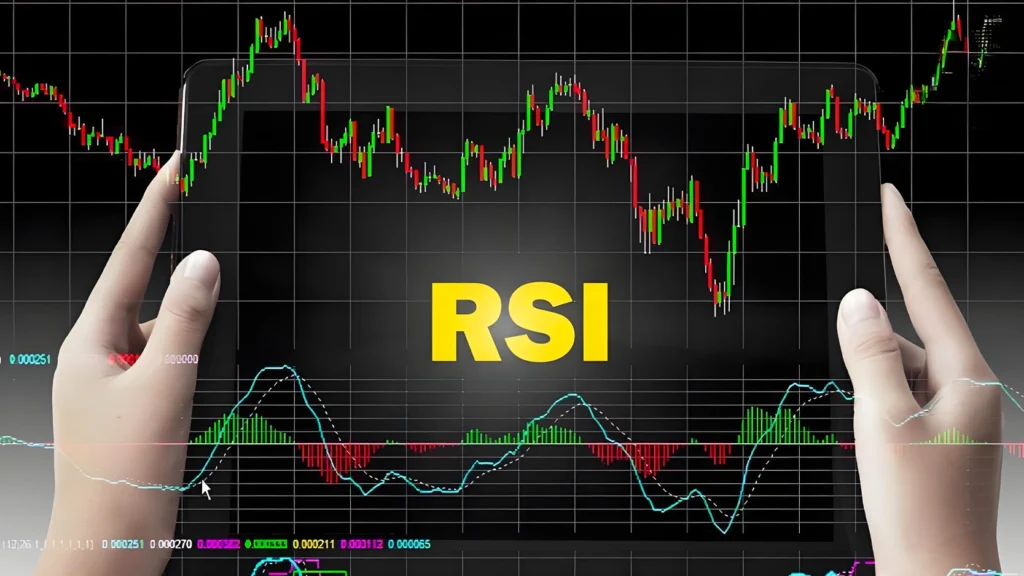Left-Side Trading vs Right-Side Trading: How to Choose the Style That Suits You?
Every successful trader has a clear personal philosophy and operational blueprint, this is what we call a “trading style”. It is not merely a collection of techniques, but a reflection of one’s worldview, risk appetite, and psychological resilience. When faced with the turbulence of the market, a fundamental question naturally arises: are you the navigator who seeks to anticipate the storm’s turning point, or the helmsman who rides the winds only after the direction is confirmed? This is the very essence of the two major schools of trading that this article will explore in depth—the core differences between left-side and right-side trading.
Predict the Market or Follow the Trend?
In the undulating curves of financial charts lies an invisible boundary that demarcates two fundamentally opposing trading philosophies. This line represents either the “trough” where prices transition from decline to rise, or the “peak” where they shift from ascent to descent. The most essential distinction between left-side and right-side trading lies in which side of this line traders choose to act upon. This choice of timing stems from two diametrically opposed beliefs: one camp believes in “predicting” the future, while the other insists on “confirming” the present. Below, we will delve into the core of these two philosophies.
What Is Left-Side Trading?
Left-side trading is essentially counter-trend trading. Its core approach is to enter the market “before” a trend reversal becomes clear. This means that when prices are in a downtrend, left-side traders start buying; when prices are in an uptrend, they start selling. As their actions occur on the “left side” of the price chart’s troughs or peaks, the strategy earns its name. The ultimate goal is the legendary feat of “buying at the bottom and selling at the top”.
This trading style is rooted in a philosophy of strong belief in “mean reversion”. Left-side traders hold that short-term market fluctuations often deviate from intrinsic value, but will eventually swing back like a pendulum to equilibrium. As a result, they follow the simplest commercial principle—“buy low, sell high”. This mindset closely aligns with the logic of value investing, as traders seek quality assets unjustly punished by market panic and trading at prices far below their true worth.
The most famous interpretation of this philosophy is none other than Warren Buffett’s well-known saying: “Be fearful when others are greedy, and be greedy when others are fearful”. This quote perfectly captures the contrarian, counterintuitive mindset of left-side traders. To summon the courage and conviction to buy amid market pessimism, they typically rely on in-depth fundamental analysis, carefully examining a company’s financial health, profitability, and long-term competitiveness to ensure they are buying temporarily undervalued gold rather than perpetually sinking sand.
What Is Right-Side Trading?
In contrast to the predictive mindset of left-side trading, right-side trading is essentially trend-following trading. Right-side traders never attempt to predict market turning points; instead, they choose to enter only “after” a new trend has been clearly confirmed by the market. This means they begin buying once prices rebound from a trough and establish an upward trend, or they start selling once prices retreat from a peak and form a downward trend. As their actions occur on the “right side” of the chart’s troughs or peaks, this approach is called right-side trading.
The core belief of right-side traders is that “the trend is your best friend”. They do not worry about missing the very start of a rally or a decline, because their goal is not to capture the entire swing, but to steadily harvest the most substantial and reliable “middle section” of the trend. Their guiding principle is to “buy high and sell higher” or “sell low and cover lower”, grounded in the conviction that once a trend takes shape, it is likely to persist for a period of time.
Legendary speculator Jesse Livermore is often cited as a representative of this style. Right-side trading relies heavily on technical analysis to identify objective signals that confirm a trend. These signals may include a breakout of a key price range, the formation of a golden cross in moving averages, or a significant surge in trading volume. Such technical indicators provide traders with both the entry ticket and the rhythm to dance in step with the trend.
Related Reading: What Is a Moving Average and How Does It Reveal Market Trends?
The Strengths and Weaknesses of Left-Side vs Right-Side Trading in Different Market Environments
No trading strategy is omnipotent, no single method works in all market conditions. A tool that helps you ride the waves in one environment may become a shackle that holds you back in another. Therefore, a deep understanding of when each trading style shines, and when it falters, is the key for traders to survive and profit over the long term.
Opportunities and Challenges of Left-Side Trading
Opportunities (Advantages):
- Higher Potential Returns: The greatest allure of left-side trading lies in its enormous profit potential. If traders can successfully predict and capture the absolute market bottom, they can fully enjoy the entire subsequent uptrend, with returns far exceeding those of most other strategies.
- Strong Performance in Ranging Markets: When the market enters a ranging market with no clear direction, prices oscillate within fixed support and resistance zones. In this environment, the contrarian mindset of “buy low, sell high” becomes highly effective. Traders can buy when prices approach support and sell near resistance, systematically profiting from range-bound fluctuations.
- Lower Average Cost: As left-side trading is essentially about buying when prices are relatively cheap and market sentiment is pessimistic, positions are often established at lower average costs, laying a solid foundation for future gains.
Challenges (Disadvantages):
- High Risk of Entering Too Early: The biggest danger of left-side trading is what’s often called “catching a falling knife”. The predicted bottom may turn out to be only a brief pause in a prolonged downtrend. If the judgment is wrong, counter-trend positions can suffer heavy losses, or even be forced to stop out at much lower levels.
- Enormous Psychological Pressure: Buying when the market is panicked and negative news is everywhere requires exceptional mental strength. Traders must endure the pain of floating losses while resisting intense pressure from market sentiment and their own self-doubt.
- High Time Cost: If the market does not reverse as expected, capital may remain locked in a losing position for an extended period, a situation known as being “trapped”. This not only results in actual capital loss but also imposes significant opportunity costs, causing traders to miss other potential trades.
Strengths and Weaknesses of Right-Side Trading
Strengths (Advantages):
- Higher Probability of Success: The core strength of right-side trading is that positions are taken only after a trend has been confirmed. This means traders enter when market momentum is already in their favor, theoretically raising the odds of a winning trade.
- Lower Initial Psychological Pressure: Moving with the trend and aligning with prevailing market sentiment often leads to seeing unrealized profits shortly after entry. This positive feedback greatly boosts trader confidence and is far less stressful than going against the current.
- Efficient Use of Capital: Right-side traders commit capital only when trends are active, avoiding the long-term tying up of funds in directionless assets. This allows for more efficient capital turnover and utilization.
Weaknesses:
- Vulnerable in Ranging Markets: “The Achilles’ heel” of right-side trading is a sideways market with no clear trend. In such conditions, prices repeatedly test the top and bottom of a range, often producing false trend signals: buying high near resistance only to see prices fall and trigger stop-losses, or selling low near support only to watch prices rebound. This cycle of repeated losses is vividly known as being “whipsawed”.
- Less Favorable Entry Prices: As right-side traders must wait for trend confirmation, they inevitably miss the earliest part of the move. As a result, their entry prices are relatively higher, leaving smaller profit potential compared to a well-executed left-side trade.
- Prone to FOMO: The habit of chasing established trends makes right-side traders especially vulnerable to “fear of missing out” (FOMO). When markets rally quickly, anxiety about missing opportunities may push them to abandon their trading plan and enter impulsively at emotional highs, often right at the end of the trend.
To present the differences between the two strategies more clearly, the following table provides a comprehensive comparison across multiple dimensions:
| Dimension | Left-Side Trading | Right-Side Trading |
| Core Philosophy | Contrarian, mean reversion | Trend-following, momentum-driven |
| Entry Timing | Before trend reversal | After trend confirmation |
| Main Analysis | Fundamental analysis | Technical analysis |
| Suitable Market | Ranging markets | Trending markets |
| Psychological Challenge | Fighting fear, enduring drawdowns | Overcoming FOMO, avoiding chasing tops |
|
Potential Returns |
High | Moderate |
| Main Risks | Failed prediction, being trapped long-term | Sideways whipsaws, repeated stop-outs |
| Representative Figure | Warren Buffett | Jesse Livermore |
What Technical Indicators Do Left-Side and Right-Side Traders Commonly Use?
Transitioning from trading philosophy to practical execution requires objective tools to transform strategies into concrete actions. Technical indicators serve as precision instruments that traders use to interpret market language and identify potential trading opportunities. While trading psychology is crucial, even the best strategies remain theoretical without these analytical tools.
Supporting Left-Side Trading: Essential Tools for Identifying Oversold Conditions and Divergence
Left-side traders focus on detecting signs of weakening momentum, making “oscillators” that measure overbought/oversold conditions their preferred analytical tools.
Relative Strength Index (RSI):
- Core Functionality: The RSI is a momentum oscillator that measures the speed and magnitude of price movements by comparing average gains against average losses over a specified period. Its values fluctuate between 0 and 100.
- Oversold Zone: When the RSI reading falls below 30 (or even below 20 in more stringent strategies), this typically indicates an “oversold” market condition. This suggests that selling pressure may have been overextended, potentially undervaluing the asset and creating conditions ripe for a rebound. For left-side traders, this provides a potential counter-trend buying signal.
- RSI Divergence (Divergence): This represents the most sophisticated application of RSI by left-side traders. The so-called “bullish divergence” refers to when the market price hits a new low lower than the previous one, while the RSI indicator fails to follow suit and instead forms a low higher than the previous one. This phenomenon of “price falling while the indicator rises” strongly suggests that downward momentum is waning, significantly increasing the likelihood of a trend reversal, making it a classic entry signal for left-side trading.
Supporting Right-Side Trading: Signals for Trend and Momentum Confirmation
Right-side traders require “confirmation signals” that indicate an established trend rather than “predictive signals”. Therefore, “trend indicators” that smooth out price fluctuations and clearly indicate trend direction become their most reliable allies.
- Core Function: The moving average calculates the average price over a specific period and connects these averages into a smooth curve. This line effectively filters out short-term market noise, helping traders visually identify the market’s primary trend direction. When the moving average shows a steady upward slope, it indicates an uptrend; conversely, a downward slope signals a downtrend.
- Golden Cross: This is a classic “buy” signal widely recognized in right-side trading. It occurs when a short-term moving average (e.g., 50-day) crosses above a long-term moving average (e.g., 200-day). This crossover signifies that recent market momentum has surpassed long-term momentum, confirming the start of an uptrend and providing right-side traders with a basis for trend-following entry.
- Death Cross: In contrast to the Golden Cross, when a short-term moving average crosses downward through a long-term moving average, it forms a “Death Cross”. This is regarded as a confirmation signal of a downtrend, providing right-side traders with objective justification for selling or establishing short positions.
The Psychology of Trading: Are You Driven by Fear of Missing Out (FOMO) or Fear of Loss?
Even with the most perfect strategy and sophisticated tools, the ultimate battleground in trading lies within the trader’s own mind. Each trading style exposes practitioners to specific psychological pressures, if they can’t acknowledge or manage these emotions effectively, these emotions can derail even the best-laid plans.
Related Reading: What Is FOMO and How Can You Avoid the “Fear of Missing Out” Trap in Trading?
The Psychological Challenges of Left-Side Traders: Battling Fear and Contrarian Thinking
Left-side traders walk a solitary path, their greatest demons stemming from the market’s most primal emotion—fear.
- Fear of loss: Buying when the market is in despair and prices continue to fall means each further price drop mercilessly challenges the trader’s judgment: “Am I wrong?” This persistent negative feedback triggers intense fear of loss, potentially causing traders to panic sell at the last moment before dawn or miss the best entry opportunities due to fear.
- The Test of Conviction: The success of left-side trading hinges on absolute faith in one’s own research. Traders must summon the courage to withstand negative reports from mainstream media, pessimistic forecasts from analysts, and the prevailing market panic. This is not merely a matter of bravery but a stern test of their preliminary analytical work.
- The Agony of “Being Early”: In trading, “being early” and “being wrong” are indistinguishable in the short term. Even if a left-side trader’s analysis ultimately proves correct, they may endure a period of paper losses before the market truly reverses. Watching positions accumulate deeper losses before turning profitable presents one of the most grueling psychological challenges for left-side traders.
The Pitfall of Right-Side Traders: How to Overcome “Fear of Missing Out” (FOMO)?
While right-side traders align themselves with market trends, they confront an equally formidable psychological challenge rooted in another primal market emotion—greed, most commonly manifested as the “Fear of Missing Out”.
- FOMO Defined: Fear of Missing Out (FOMO) refers to the intense, irrational anxiety and impulse traders experience when witnessing a rapid market move they failed to participate in. This psychological fear of missing “easy money” opportunities drives them to make unplanned trading decisions.
- The Urge to Chase Prices: The most immediate consequence of FOMO is leading right-side traders to commit their most fatal mistake—buying high and selling low. Driven by greed, traders abandon their original entry rules and impulsively buy at highly risky levels when prices have already surged significantly and market sentiment is most euphoric. These moments often coincide precisely with when trends are about to exhaust or reverse.
- Discipline as the Ultimate Antidote: The only effective weapon against FOMO is ironclad trading discipline. This requires having a pre-established, objective trading plan. For instance, strictly adhering to rules like “I will only buy when prices break through key resistance levels and successfully retest support”. No matter how tempting the market movement appears, one must rigorously follow these rules and refuse to be led astray by emotions.
Ultimately, mastering a trading style is fundamentally about learning to manage the specific emotions that approach most readily triggers. Successful left-side traders become masters of overcoming inner “fear”, while successful right-side traders develop expertise in taming internal “greed”. Understanding your own psychological tendencies forms the essential foundation for choosing the trading path best suited to your temperament.
Why Is Risk Management the Only True Cornerstone of Trading Success, Regardless of Left-Side or Right-Side Strategy?
Whether you choose to be a lone hero going against the trend or a rider following the momentum, without a solid defensive system, your trading capital cannot survive the storms of the market, much less wait for your strategy to bear fruit. Risk management is not an optional extra but a non-negotiable cost you must pay to remain in this game. It is the single common element connecting all successful strategies, the most solid cornerstone beneath the edifice of trading.
There is no single “correct” path in the markets. The optimal trading style is an intensely personal choice that must align with your risk tolerance, psychological makeup, and analytical strengths. True trading mastery lies not in which side one chooses, but in the depth of understanding of the chosen approach, strict adherence to trading discipline, and most crucially, unwavering commitment to risk management.
In the trading world, every pip gained or lost matters profoundly, and controlling trading costs is pivotal to enhancing long-term profitability. This is precisely where platforms like CashbackIsland demonstrate their value. By directly rebating a portion of trading costs, they effectively reduce the expense of executing any strategy. Whether it’s left-side traders scaling into positions during bear markets or right-side traders facing inevitable stop-losses in ranging markets, these accumulated rebates tangibly improve the net returns of trading plans. This financial efficiency, combined with the professional analytical tools and real-time market intelligence provided by such platforms, creates a robust trading ecosystem. It empowers modern traders not only to wisely “select” their style but also to “execute” it with greater efficiency and cost-effectiveness.
CashbackIsland continuously updates its trading education resources. Traders can visit the “CashbackIsland Learning Guide” section to gain more forex knowledge and investment skills.
Frequently Asked Questions
Q1. Which Is Better: Left-Side Trading or Right-Side Trading?
There is no absolute winner between the two strategies. The key lies in whether they suit a trader’s risk tolerance, investment goals, and market environment. Left-side trading (contrarian) offers higher potential returns but also carries higher risk, making it more suitable for investors who can endure short-term volatility and have strong fundamental analysis skills. Right-side trading (trend-following) has relatively lower risk and emphasizes stability, making it better suited for traders who prefer to go with the trend and focus on risk management.
Q2. Which Trading Style Should Beginners Start With?
For beginners, it is generally recommended to start with right-side trading. Since this strategy follows the trend and waits for confirmation before entry, the direction is clearer and the risks are relatively more controllable. This helps beginners build trading discipline and avoid the severe risk of “catching a falling knife” when attempting contrarian trades without the ability to accurately identify market bottoms.
“Trading financial derivatives involves high risk and may result in capital loss. The content of this article is for informational purposes only and does not constitute investment advice. Please make decisions prudently based on your personal financial situation. CashbackIsland assumes no liability for any trading-related consequences.”
Related articles
-
In the realm of modern financial market analysis, whether it’s the fast-changing forex market, the highly volatile cryptocurrency space, or traditional stock indices, technical analysis plays an indispensable role. Among the many technical indicators, the Relative Strength Index (RSI) is undoubtedly one of the most classic and widely used tools....2025 年 9 月 4 日
-
In today's environment of persistently low interest rates combined with inflationary pressures, simply depositing money in the bank is no longer sufficient to preserve the future value of your assets. An increasing number of investors are seeking more proactive ways to grow their wealth, shifting from traditional savers to active...2025 年 8 月 13 日
-
In financial market terminology, “bottom-fishing” is a highly enticing yet challenging concept. It refers to an investment strategy aimed at buying assets that have undergone significant price declines and are believed to be undervalued, with the expectation that their prices will eventually rebound sharply. This strategy embodies the ultimate expression...2025 年 8 月 13 日













